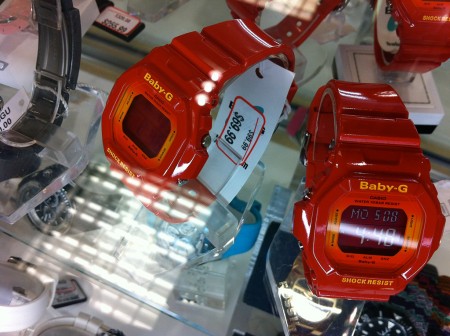In The End of Nature, Middlebury College professor and 350.org founder Bill McKibben makes the case that humanity has put an end to nature by altering the climate, and then goes on to consider the implications. McKibben’s book – first published in 1989 – briefly explains why human activities are increasing the quantity of greenhouse gasses in the atmosphere, and why this will produce change on a planetary scale. His tone is mostly one of lamentation. He expresses sadness about that which is already doomed to destruction, before progressing extensively into the question of what can still be saved, and what means might achieve it. Reading The End of Nature in 2012 is dispiriting. It proves how everything important about climate change was well understood decades ago, including why our political and economic systems have done nothing serious to slow it down. Nonetheless, McKibben’s appeal is a poignant and effective one. By putting humanity’s current activities in context, McKibben conveys the reality that what happens to the Earth now will mostly be a matter of human choices, and that the philosophies we adopt in the decades ahead will affect the prospects of all the life forms that depend upon this planet.
The basic idea of the book is that humanity has no so thoroughly altered the planet that nothing can be considered ‘nature’ in the sense of ‘unpopulated wilderness’ anymore. Climate change is the most important and dramatic change humanity has produced, but our chemical signature is also written in the form of novel isotopes from nuclear tests, changes to the ozone layer, and in the legacy of pollution and pesticides. According to McKibben’s definition, nobody my age has ever seen nature – only nature as modified through human industrial activity.
Along with climate change, McKibben devotes a fair bit of space to talking about genetic engineering. He sees it as a possible way of keeping humanity’s billions alive in a world that is increasingly damaged by our choices. But it is also another step away from ‘nature’. He envisions a world of trees and fish and animals modified to tolerate a changed climate, and modified further to better serve human needs. Reading these passages in 2012, it seems like he over-estimated the importance of genetic engineering, or at least under-estimated how long it would take to arrive. For instance, he imagines custom organisms that draw in nutrients through tubes and produce the parts of chickens many humans enjoy eating. Margaret Atwood’s ‘ChickieNobs’ from the dystopian 2003 novel Oryx and Crake are described in basically identical terms in McKibben’s book, but nothing remotely like them seems to exist in the real world. So far, genetic engineering has been more about experimentation than implementation, and nothing too world-changing seems to have arisen from it. Perhaps that perspective reflects ignorance on my part, especially given the evolving character of the global ‘agribusiness’ and biotechnology industries.
Because I borrowed a copy of the book from a library, rather than buying one, I didn’t take the detailed marginal notes that I usually do when reading a book. I did, however, pick out a few passages that I think are especially evocative and worthy of discussion:
On the habits of humanity
“The problem, in other words, is not simple that burning oil releases carbon dioxide, which happens, by virtue of its molecular structure, to trap the sun’s heat. The problem is that nature, the independent force that has surrounded us since our earliest days, cannot coexist with our numbers and our habits. We may well be able to create a world that can support our numbers and our habits, but it will be an artificial world, a space station.
Or, just possibly, we could change our habits.” (p.144 2006 Random House trade paperback edition)
Timing
“I have tried to explain, though, why [dealing with climate change] cannot be put off any longer. We just happen to be living at the moment when the carbon dioxide has increased to an intolerable level. We just happen to be alive at the moment when if nothing is done before we die the world’s tropical rain forests will become a brown girdle around the planet that will last for millennia. It’s simply our poor luck; it might have been nicer to have been born in 1890 and died in 1960, confident that everything was looking up. We just happen to be living in the decade when genetic engineering is acquiring a momentum that will soon be unstoppable. The comforting idea that we could decide to use such technology to, in the words of Lewis Thomas, cure “most of the unsolved diseases on society’s agenda” and then not use it to straighten trees or grow giant trout seems implausible to me: we’re already doing those things.” (p.165)
On caring for future generations
“We flatter ourselves that we think of the future. Politicians are always talking about our children, our grandchildren, and, as individuals, we do think about them, but in the same way we think about ourselves. We lay aside money for them, or land. But we do not really think of grandchildren in general. “Future generations do not vote; they have no political or financial power; they cannot challenge our decisions,” said a perceptive introduction to the United Nations report on Our Common Future. Future generations depend on us, but not vice versa. “We act as we do because we can get away with it.”” (p.170)
Beyond what one person can deal with
“The inertia of affluence, the push of poverty, the soaring population – these and the other reasons listed earlier make me pessimistic about the changes that we will dramatically alter our ways of thinking and living, that we will turn humble in the face of our troubles.
A purely personal effort is, of course, just a gesture – a good gesture, but a gesture. The greenhouse effect is the first environmental problem we can’t escape by moving to the woods. There are no personal solutions. There is no time to just decide we’ll raise enlightened children and they’ll slowly change the world. (When the problem was that someone might drop the Bomb, it perhaps made sense to bear and raise sane, well-adjusted children in the hope that they’d help prevent the Bomb from being dropped. But the problem now is precisely too many children, well adjusted or otherwise.) We have to be the ones to do it, and simply driving less won’t matter, except as a statement, a way to get other people – many other people – to drive less. Most people have to be persuaded, and persuaded quickly, to change.” (p.174)
So McKibben lays out the challenge that has been occupying some of the most capable and driven people in the world for decades (occupying them, but not yet producing even the beginnings of success) and which seems likely to be the defining activity for humanity as a whole for the decades and centuries ahead.
Since 2007, McKibben has been an important organizer of environmental campaigns and the founder of 350.org, an organization that aims to keep the atmospheric concentration of carbon dioxide below 350 parts per million. Beyond that level, the sensitivity of the Earth to greenhouse gasses is such that we would likely see the disappearance of nations like the Maldives along with large parts of nations like Bangladesh and the Netherlands, accompanied by profound changes to physical and biological systems around the world. Keeping the level of greenhouse gas pollution in the atmosphere below 350ppm is incredibly ambitious and far beyond what any large country on the planet is meaningfully aiming for now. If implemented globally, Canada’s policies would probably put us more in the territory of 1000ppm by 2100 – territory that involves changes so profound that they might threaten the future of the human species, as well as the future of countless other less resilient species in the ecosystems of the world.
The End of Nature is a reminder of the scale of the fight we have on our hands, as well as of the stakes involved. If we are to have any chance of succeeding, we must be committed, passionate, strategic, self-sacrificing and willing to do what has never been done before.



